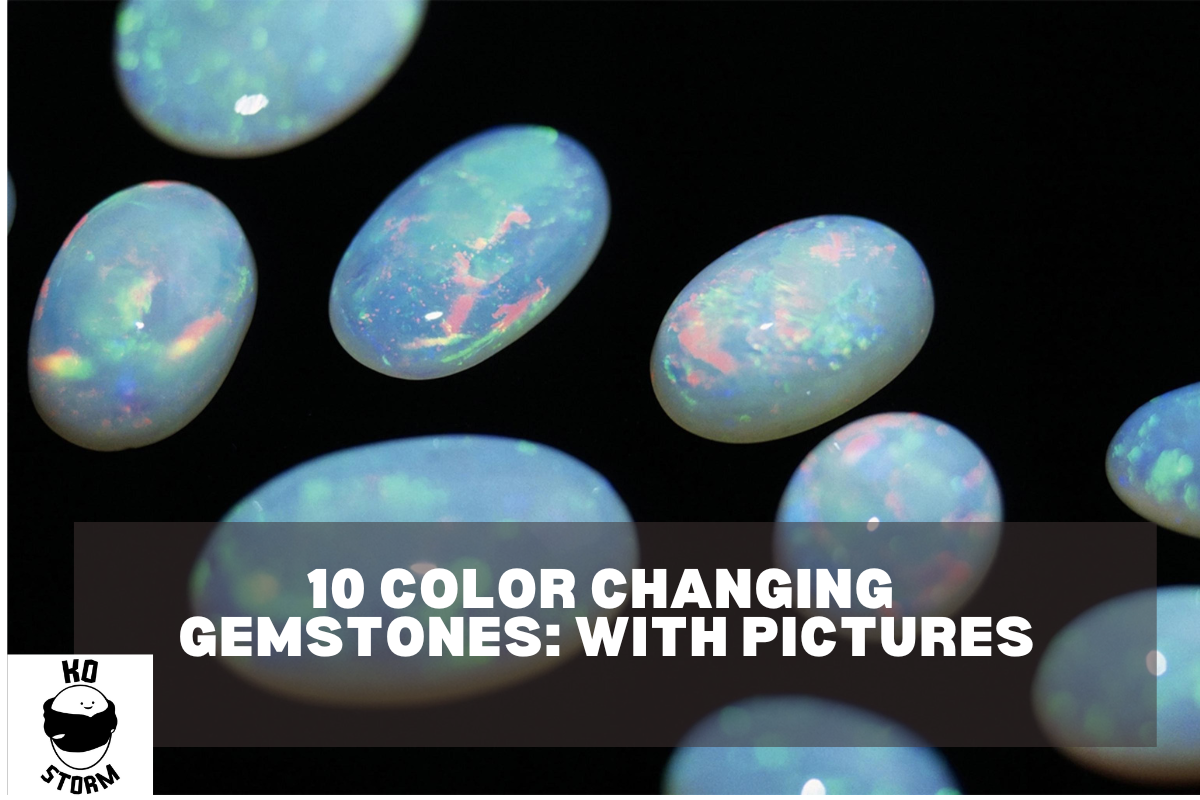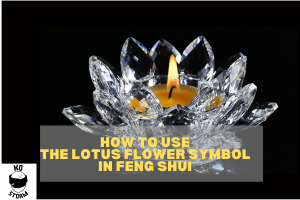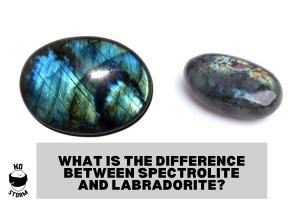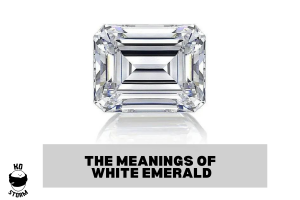For millennia gemstones have been a fascination for people.
However, recent discoveries have revealed fascinating properties in their structures that can cause amazing optical effects.
Many optical effects are present in various gemstones. However, the phenomenon known as “color change” is one of the most well-known.
Color Changing Gemstones:
Under different lighting conditions, color-changing gemstones can appear in different colors.
This phenomenon is also known as the Alexandrite Effect. It was discovered in the gemstone alexandrite.
1. Alexandrite

Gem enthusiasts often refer to alexandrite with the catchphrase “Emerald By Day and Ruby By Night” to reflect its changing colors under light.
The gem was initially believed to be an emerald by mineralogists, but it suddenly turned purple-red when lit under lamps.
It was discovered by Nils Gustaf Nordenskiold, a Finnish mineralogist.
He originally called it diaphane, from the Greek word for “two appearances”, but Count Perovskii gave it the name “Alexandrite” in honor of Tsar Alexander II Romanov’s military colors, green and red.
What causes it in Color Changing Gemstones?
Alexandrite is the color-change variant of the mineral Chrysoberyl.
It is one of the hardest gemstones, with a Moh’s scale score of 8.5.
Chrysoberyl specimens show a color change where chrome is substituted for aluminum in their atomic structure.
Chrysoberyl is formed by beryllium. However, beryllium & chromium are rarely found in the same rocks.
Because alexandrite can only form in one situation, it is very rare.
It is rare to find alexandrite in small quantities around the globe.
Greenlight can be picked up by the eyes more quickly than red light.
Because the sun shines daytime, Alexandrite is greener than normal.
Incandescent lighting, such as a candle, lamp, or fire, emits less green-blue light, which causes alexandrite’s appearance to be more reddish.
Pleochroism
Some alexandrite gemstones also display pleochroism.
This phenomenon causes gemstones to display different colors when viewed from different angles, particularly under polarized light.
Pleochroism is visible in some varieties of alexandrite and chrysoberyl, but not all specimens.
This effect is not as distinctive as the color-change effect.
Trichroic stones such as Alexandrite can display three colors depending on how they are viewed.
Value and rarity
Alexandrite is a very rare gemstone. It can only be formed in certain conditions.
This makes it a valuable gem that has the ability to change color.
The most expensive specimens are those with distinct, strong colors.
Stones with more than five carats are extremely rare.
2. Sapphire

There are many colors that can be found in sapphire, with varying degrees and rarities.
The most valuable sapphire color is traditionally a deep, rich, transparent royal blue.
Because sapphires are a prized gem among royalty and historical figures, many gemstone jewelry enthusiasts know a lot about them. It may be a September birthday person who has a special love for it.
Surprisingly, many people, even those born in September are not aware of color-change sapphires.
A color-change sapphire can appear in vivid blue-violet in daylight or fluorescent light.
It will appear strong purple to reddish violet if it is brought inside.
Some sapphire varieties appear grey-green under direct sunlight, while others turn pinkish-reddish-violet when lit with incandescent lights.
What causes it to change in color?
The color shift in sapphire’s color is caused by trace amounts of metal.
The blue color-change sapphire’s unique hues are due to the combination of iron, titanium, and chromium.
The blue color of sapphires is due to iron and titanium, while rubies are reddened by chromium.
Vanadium, another trace element, is responsible for the color shift in the grey-green color change sapphires.
Gemstones are created when minerals such as these interact with the light spectrum.
The color-change effect in sapphires is similar to that in alexandrite.
It is exposed to a wider range of colors under fluorescent lighting.
Incandescent lighting emits less blue light and allows you to see the sapphire’s red hues that are often overshadowed by the sun.
Rarity and value
Color-changing sapphires are prized by jewel and gem collectors.
These specimens are highly sought-after because they exhibit strong color changes and good clarity.
Bi-colorable sapphires can also be sold for more.
This means that you can see two distinct colors regardless of the lighting.
3. Garnet

Garnet comes in many colors, similar to sapphires.
These colors may have different mineral compositions and could contain different subtypes.
Color-change garnet is one of the rarest types of garnet.
One of the most diverse color shifts is seen in color-change garnets.
Some can change from bronze to pink, while others may go from pink to teal, and others might even go from pink to purple.
In the 1990s, the most well-known color change garnet was discovered, pyrope spessartine garnet.
It can change from blue-green or purple depending on how warm or cool the lighting is.
This is similar to the grey-green color change in sapphires. It’s caused by high levels of the metallic element vanadium.
Value and rarity
Garnet is a very popular gemstone for jewelry due to its hardness and clarity.
Many garnets are also red, so people often confuse them with rubies.
The rarest form is color-change garnet. Its value is dependent on its color and other characteristics.
There are many factors that could affect this. It is rare to find blue-to-purple color-change garnets.
A 4.2-ct blue color change garnet was sold for $6.8million in 2003.
Tsavorite is another rare and valuable garnet. It was discovered in 1976, 16 years ago.
It is well-known for its distinctive vivid green appearance.
4. Diaspore
In Turkey, in the 1970s, miners found large transparent, gem-quality diaspore crystals .
It was able to appear in different colors depending on the lighting.
Diaspore is a Greek term that means “to scatter” and refers to the color effects of this mineral.
Diaspore was first discovered in Russia in 1801. It has remained under the radar of other fields than mineralogy.
Its popularity in the jewelry industry was boosted by the recent discovery of a Turkish mine.
This mine is owned by a single individual.
This mine’s diaspore gems can be identified by their trade names “Zultanite”, and “Csarite”.
These trademarked names can only be used to sell diaspore specimens that are from this particular location.
Other specimens can still be sold under the mineral name “diaspore”.
Properties
Diaspore can be found naturally as a yellow or green color.
Incandescent lighting changes it from a dark brownish green to a champagne-colored color.
This color change is noticeable in larger gems (over 5 carats).
Its hardness is 6.5-7 on the Mohs scale. This makes it very durable.
It has excellent cleavage which means it can be split more easily than other gemstones.
You should therefore be more cautious if you are using it as jewelry.
To reduce the chance of diaspore splitting, make sure it is properly cut and graded.
Diaspore may exhibit chatoyancy or cat’s eye effect.
This reflective effect is a single light band across the surface of the gem. It can display pleochroism, just like alexandrite.
Rarity and value
Diaspore is not a rare mineral.
It can be found all over the globe.
It is rare to find gem-quality diaspore with high carats, but it can be found in one mine in Turkey’s Anatolian Mountains.
Zultanite with a high carat is highly valuable and in demand.
Larger stones exhibit exceptional color play.
Fake minerals can be sold by some sellers. Synthetic diaspore is more colorful than natural.
Alexie refers to a version of synthetic glass sold in India.
A certificate of authenticity will be included with real Zultanite.
Although synthetic Zultanite can be very vibrant, it doesn’t have the true Alexandrite Effect.
It is difficult to recreate the natural effects of gemstones that change in color.
5. Fluorite

Fluorite is well-known for its stunning optical effects.
It is one of the most fluorescent gemstones, but it isn’t very popular for jewelry because of its softness (4).
It glows brightly under UV light.
It has strong fluorescence and is one of the few gems to show fluorescence in sunlight.
This effect is only found in rubies.
Color-change fluorite was only recently available on the market.
It is more popular among mineral collectors than jewelry enthusiasts.
Fluorite prices and values vary greatly. It all depends on the quality and size of the stone as well as other optical qualities.
Other optical color effects
The category of Alexandrite Effect color change is made up of these five gems.
This effect can also be produced by other minerals, such as andesine or spinels.
Some gemstones exhibit similar optical effects to other gems, but they are caused by different phenomena.
Let’s take a look at other gemstones that exhibit different forms of color play.
you may want to read: 8 Ways to Use Healing Crystals: For Your Good Health
6. Tourmaline

Tourmaline has a high popularity in jewelry because of its hardness (7-7.5), and color effects.
Like alexandrite, it can exhibit color change. It can also cause a cat’s-eye effect.
A geologist discovered that a Tourmaline from Tanzania had a second remarkable color effect.
The Usambara Effect causes tourmaline to change from green to red when it reaches a certain thickness.
Tourmaline gems with this effect can show both the red and green colors simultaneously.
High prices can be demanded large tourmalines or rare colored tourmalines (emerald green chrome and raspberry red, neon blue), Particularly prized are color-change tourmalines.
7. Opals

Because of its unique structure, an opal can contain water.
This allows it to shine in a variety of colors.
This is opalescence or -adularescence.
Opals also exhibit another optical effect. You’ll see that precious opals (gemstone qualities) appear to glow in the sunlight.
This phenomenon is known as the Schiller effect.
Opals are extremely valuable.
Opals’ value is determined by their color and their variety of them.
Black opal, which is the most valuable type, can be worth more than $10,000 per carat.
8. Labradorite

Labradorite, the most well-known form of feldspar, is a faceted gemstone.
The inclusion of minerals like hematite or copper can create many different color variations in gemstones.
Because of its unique effect, labradorescence, Labradorite is increasingly popular.
This causes labradorite to have a metallic-like, dark shimmering effect, often in blue and green.
Plécorism can also be found in the labradorite from Oregon.
Although Labradorite isn’t the most sought-after gemstone, certain colors are highly collectible and uncommon.
The most valuable specimens are those from Oregon that are naturally red, green, or watermelon (both red and green).
The most sought-after sunstone colors are red and green labradorite.
9. Diamond
A perfect cut can create a fire effect.
This is why it is so important to know how diamonds should be cut. The dispersion produces a wide range of brilliant colors.
This is similar to rainbows created by a prism.
Only zircon and diamond have enough strong refractive properties for a distinctive fire effect.
Excellent cut and clarity diamonds produce a fire effect which is a key determinant of a diamond’s worth.
10. Moonstone

Moonstone is another member in the feldspar family.
The minerals albite and orthoclase are separated during formation into alternating layers.
It produces a scattering effect of colors when sunlight hits these layers.
Romans loved moonstone because they believed it was made of solidified rays coming from the moon.
This gem was also valued in jewelry during the Art Nouveau movement.
The most valuable moonstones are transparent and colorless.
These gems were originally from Myanmar but they have become so popular that the mine has been closed.
You will need to buy them from another collector in order to obtain one.
This increases the cost.
The Earth’s Hidden Rainbow
It is amazing to consider how many different sparkling gemstones might be hidden under the ground or in mines.
If you’re looking for the jewelry with an extra special touch, there are many gemstones to choose from.
It’s not surprising that colored gemstones are more popular than diamonds when it comes to engagement rings.
It’s hard to find a person who doesn’t know anything about a color-change gem, but it’s a great way to spark a conversation.




